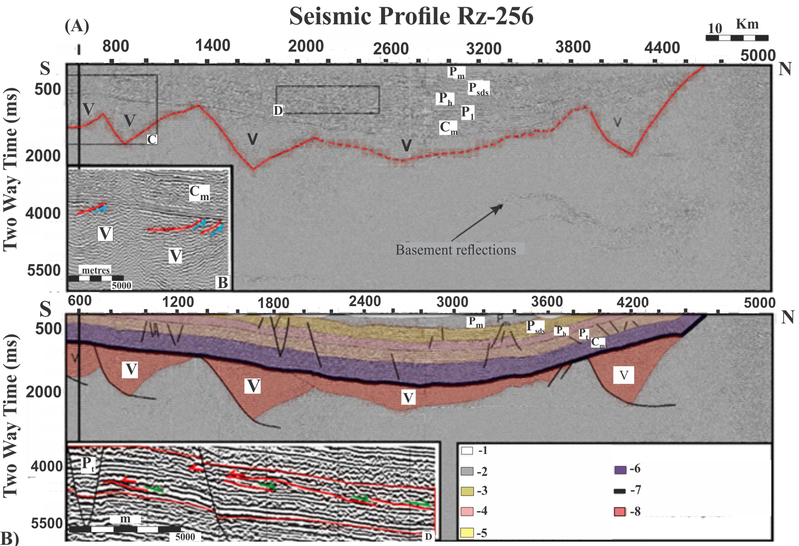RUSSIAN JOURNAL OF EARTH SCIENCES, VOL. 20, ES5003, doi:10.2205/2020ES000703, 2020

Figure 3. The N–S seismic profile Rz-256 traversing through the study area: A – folded and transferred, B – interpretation of figure A. Red line = interface of overlying sediments/basement; dashed line represents indefinite extent of contact. The black lines are normal faults with small graben structures. B – Ventersdorp basinal reflectors are truncated by a black reef quartzite (blue arrows). C – overlap (red arrows) and downward slope (green arrows) of reflectors within the Timball hill and Boshook Formations [Tinker et al., 2002]. Lithologic signatures are represented by: 1 – Quaternary sediments (Q), 2 – $P_m$, quartzite ($R_3$), 3 – Psds, sandstones and subordinate shales ($R_3$), 4 – $P_h$, shales ($R_2$), 5 – $P_t$, lava flows, carbonaceous shales, quartzites and diamictites ($R_1$), 6 – $C_m$, manganese – bearing dolomites (Ar$_2^m$), 7 – black reef quartzite (Ar$_1$), 8 – Ventersdorp lava (Ar$_1$) [Tinker et al., 2002].
Citation: Pharoe Benedick Kinshasa, A. N. Evdokimov, I. M. Gembitskaya, Christopher Baiyegunhi, Zusakhe Nxantsiya (2020), Mineralogy, geochemistry and geological occurrence of supergene manganese ore mineralization in North West Province, South Africa, Russ. J. Earth Sci., 20, ES5003, doi:10.2205/2020ES000703.
Copyright 2020 by the Geophysical Center RAS.
Generated from LaTeX source by ELXfinal, v.2.0 software package.

